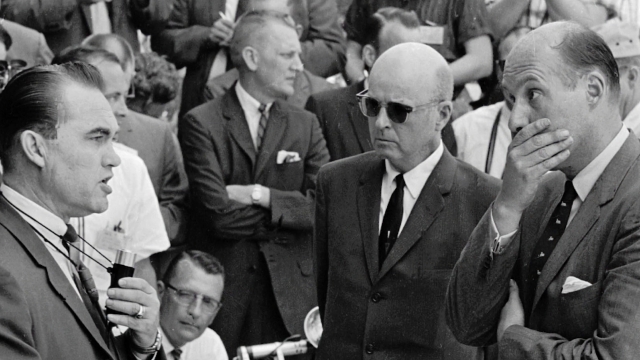A number of candidates have officially entered the 2024 presidential race from both the Democratic and Republican parties, but one potential third-party ticket is starting to get attention.
The "No Labels" political group is reportedly considering a presidential run with a mixed party ticket.
The group recently held a town hall featuring Sen. Joe Manchin, the conservative-leaning Democrat from West Virginia, though the senator told reporters nothing has been confirmed.
The bipartisan political group, founded in 2010, positions itself as above "partisanship." Its website states a potential ticket would be an "insurance plan" in case the two main parties pick candidates that "the majority of Americans don't want to vote for."
But the well-funded group has faced steep opposition from centrist Democrats.
One of the co-founders publicly resigned over the push to get on the ballot, writing in an op-ed for The Wall Street Journal that a candidate would act as a spoiler for one party and saying, "...if a No Labels ticket receives even a tiny share of the vote in key states, Mr. Trump could end up back in the Oval Office."
The group has also run into legal challenges.
Maine's secretary of state sent a cease-and-desist letter to the group for allegedly misrepresenting its intentions to get on the ballot.
The Arizona Democratic Party filed a complaint against the group as well, complaining of "shadowy dark money interests" seeking ballot access.
A dedicated third-party run might appeal to a number of voters in today's political climate.
Both major parties have drawn a majority of unfavorable views for decades. A steady majority of Americans surveyed by Gallup say a third party is needed, finding both parties inadequate in representing the American people.
But if there is sizable demand for a third-option, why are third-party candidates so controversial?
Historically, third-party candidates see very little support in the U.S., but there have been some exceptions.
SEE MORE: Will No Labels launch another presidential candidate in 2024?
In 1912, former President Theodore Roosevelt left the Republican convention and ran as a candidate for the progressive "Bull Moose" party. The Democrat, Woodrow Wilson, went on to win the electoral college with a historic landslide of 435 votes. Roosevelt was just over 2 million votes behind Wilson in the popular vote out of a total 14.8 million.
In 1968, famed segregationist and governor of Alabama, George Wallace, won a surprising 13.5% of the popular vote. He also won dozens of electoral votes after winning five states in the South running as a candidate for the American Independent Party.
In 1992, Ross Perot ran as an independent and surpassed even Wallace in numbers with 20 million, or 19%, of the overall popular vote.
Political parties are not in the U.S. Constitution, and some of the country's founders were even wary of partisanship.
But because U.S. elections use a plurality electoral system, or a "winner takes all" system, the results favor two competing parties or caucuses. Unpopular candidates and parties can still win elections since they do not require over 50% of the vote to win a congressional seat or presidential run; they just need more than the other candidates.
In recent years, more localities have been experimenting with different voting systems.
For example, New York City recently adopted "ranked-choice voting" for all city positions, including the latest mayoral race. The system lets voters rank multiple candidates in their order of preference. If no candidate gets more than half of the first choice votes off the bat, the results are immediately tallied in rounds that eliminate whoever is in last place, and then factor in the second choice, third choice and so on.
Round by round, the candidate with the fewest votes is eliminated. If one's top-rated candidate is eliminated, their vote goes to their next highest choice. This keeps going until only two candidates remain. The person with the most votes wins.
Advocates say a ranked-choice system could make voters more open to third-party candidates. But for presidential and congressional races, it could be a long time before there's a widespread adoption of a system that's more friendly to third parties.
So for now, even if a third-party candidate had sizable support, it likely wouldn't be enough to unseat the major parties.
Trending stories at Scrippsnews.com



